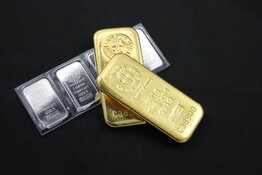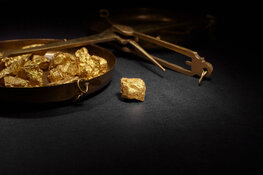- The Standard & Poor's 500 Index of stocks has climbed 18% since he said Aug. 27 that additional asset purchases might be warranted. How can it not go up with nearly $2 trillion fabricated from thin air pointed at it? That is exactly the stated goal of Bernanke in justifying QE 1 and 2.
- The risk premium on high-yield, high-risk bonds has narrowed to 5.16 percentage points from 6.81 percentage points, Bank of America Merrill Lynch index data show.
- Inflation expectations have jumped by 44.4%.
- The unemployment rate has fallen to its lowest level in almost two years.
- An absolute lie.
Quantitative easing "was a key factor in taking deflation risk off the table," said Peter Hooper, chief economist at Deutsche Bank Securities Inc. in New York. "It certainly helped bolster longer-term inflation expectations, and it was a factor that contributed to the rally in the stock market. Overall, I give it a good grade."
The Fed's Nov. 3 decision to buy $600 billion of Treasury securities through June was dubbed QE2 by analysts and investors because it followed $1.7 trillion of asset purchases that ended in March 2010. The plan sparked the harshest political backlash against the central bank in three decades, with Republican lawmakers warning the additional stimulus risked causing a surge in prices. So far, they were wrong.
Preferred Gauge
The Fed's preferred inflation gauge, which excludes food and fuel, rose 0.8% in January from a year earlier, matching December's gain, the lowest in five decades of record- keeping. Fed officials aim for long-run overall inflation of 1.6% to 2%.
As financial markets rebound, economists are forecasting growth this year at 3%, according to the median response of 65 analysts surveyed by Bloomberg News from March 4 to March 10. In an October survey, the median forecast was 2.4%.
"QE2 has given us some opportunity to act on our debt and deficit, and we have not taken advantage of that," House Financial Services Committee Chairman Spencer Bachus said at a March 2 hearing after Bernanke reiterated his call for Congress to rein in the national debt, a message that resonates with House Republican lawmakers. "Any criticism directed at the chairman, you need to also sort of point that finger back at yourselves," said Bachus, an Alabama Republican.
Is it just me, or does record prices for fuel, clothing and food not constitute rampant and out of control inflation? Where does this woman buy her glasses?
The article continues:
Tone Down
The improvement in the economy hasn't prompted Fed critics like Representative Ron Paul to tone down their disapproval.
"The real cause of price inflation, which is a deadly threat to us right now, is the Federal Reserve System and our monetary policy," Paul, a Texas Republican who wrote the book "End the Fed," said at the hearing.
While inflation expectations have risen, they don't show that investors are worried about skyrocketing prices. The break- even rate for 10-year Treasury Inflation Protected Securities, the yield difference between this debt and comparable maturity Treasuries, rose to 2.57 percentage points on March 8, the highest since July 2008 and up from 1.63 percentage points on Aug. 27. The rate is a measure of the outlook for consumer prices during the life of the securities.
Price Stability
Fed policy makers, whose goals are price stability and full employment, said they voted for QE2 partly because of concerns that prices would fall. New York Fed President William Dudley, who is also vice chairman of the Federal Open Market Committee, said Feb. 28 that the "considerably brighter" outlook isn't yet reason to withdraw the stimulus.
Yields on 10-year Treasury notes remain below their average of 5.23% during the last decade, according to data compiled by Bloomberg. The benchmark security yielded 3.17% yesterday, up from 2.64% on Aug. 27.
Even so, QE2 is "working pretty good" at achieving the Fed's goals of higher inflation and faster growth, said Keith Hembre, chief economist at Nuveen Asset Management in Minneapolis. "You look backward and that's essentially what it's done."
The FOMC affirmed plans to continue the program through June at its March 15 meeting, noting that "the economic recovery is on a firmer footing." The unemployment rate fell to 8.9% in February, the lowest since April 2009. The decline ended the longest period of joblessness at 9% or higher since monthly records began in 1948.
Record Junk-Bond Sales
The availability of capital to the lowest-rated companies also has increased since the start of QE2. Sales of high-yield, or junk, bonds have reached $72.9 billion this year, the most on record for the first quarter, according to data compiled by Bloomberg.
The warnings about inflation risk still may prove prescient in the long term if the Fed botches the withdrawal of its unprecedented stimulus, Hembre said. The Fed has kept its benchmark interest rate near zero since December 2008, and the central bank's assets have ballooned to a record $2.58 trillion.
"The Fed still faces a challenge in terms of exiting and unwinding its large balance sheet, and that's going to be a tricky process, to say the least," Deutsche Bank's Hooper said.
While the Fed hasn't committed to the specific methods it will use to exit, or in what order, it has been releasing details about its progress in building new programs and expanding its ability to drain reserves. This includes increasing the number of its counterparties.
Fed Tools
Dudley reiterated his view last week that the Fed has the tools, such as raising the interest rate it pays on bank reserves, to tighten credit when needed, and that QE2 has helped the economy by boosting stocks and bonds.
The Fed "never would have done" the asset purchases if it thought the program risked a surge in prices, Dudley said in response to questions after a March 11 speech in Flushing, New York.
"People worry that these purchases will ultimately be inflationary, and I don't think they have anything to worry about," he said. "We are absolutely determined to prevent any long-term inflation problem."
Intended as a chastisement of Ron Paul and his End the Fed lobby, the article actually underscores how misinformed and just plain ignorant a lot of these financial journalists are when it comes to economics. But don't worry—here at Midas Letter we will vigilantly identify such hillbilly journalistic recklessness on a daily basis.
Midas Letter Premium Edition identifies 5 stocks on the first Sunday of each month from the TSX Venture Exchange that are expected to double within 12 to 18 months, 9 out of 10 times, or your money back. Subscribe now for $49 per month, or $499 for one year at www.midasletter.com/subscribe.php; 30-day instant refund period from your first subscription day if not 100% satisfied.



































